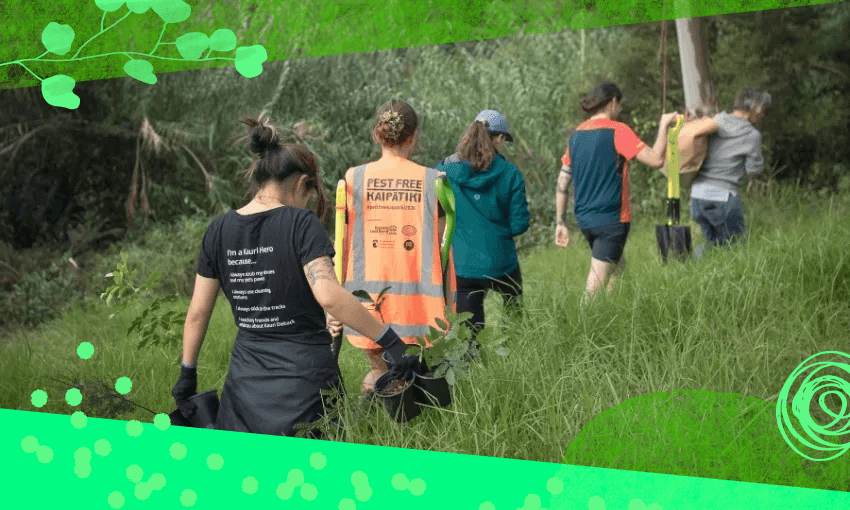When thinking big picture about conservation gets overwhelming, look for some smaller scale wins in your own backyard.
This is an excerpt from our weekly environmental newsletter Future Proof. Sign up here.
When the world feels big and bad and slippery, there’s solace in shrinking your sphere down to just one place. Focusing on making your corner a teeny bit better is a path to feeling like maybe things aren’t all bad, and maybe we aren’t all doomed.
This idea is in action on the North Shore of Auckland, where a consortium of conservation groups unites under the banner of the Pest Free Kaipātiki Restoration Society (PFK).
“We want to say, you can act and you can make a difference on a small scale,” says Annie Dignan, general manager of PFK.
PFK’s pioneering halo model
The project divvies up Kaipātiki into 18 “bite-sized” pieces, each centred on a reserve and surrounded by a “halo”. These pockets of urban nature are a lifeline for the city’s wildlife and people alike.
“I describe it as a predator-proof fence, without the fence. It’s neighbours holding hands around that reserve,” says Dignan.
Activities in each halo area are shaped and driven by the local community, with PFK’s role to reduce barriers and enable action. For some people, it’s about eradicating pest plants like woolly nightshade – which can cause asthma-like symptoms. For others, they might want improved seating in their reserve. For others still, it’s about the predators: getting rid of the rats and the possums, and bringing back the birds.
“If I hear we’ve got a rat problem in Auckland, it’s like someone’s pulled the batteries out of me. It’s just too big,” says Dignan. “When it’s bite-sized, I can act. We do try and remove that sense of being overwhelmed.”
‘A connected community is a resilient community’
Beyond the return of birds like banded rails and kākā, PFK and its halo projects foster community connection: “that wellbeing stuff, health, a sense of purpose… I literally had someone say that he thinks our organisation saved his life,” says Dignan. She also credits the halo work with linking her own family to their neighbours, who then stepped in to help when her home began to flood during last year’s extreme wet.
Like many volunteer organisations, attracting younger and diverse folks can be a challenge. Some of the halo projects have volunteers who’ve been protecting and restoring their local patch for 45 years – “an amazing gift,” says Dignan. Initiatives like community events, flexible timing and tasks, and reaching out in Mandarin, are helping to engage new volunteers.
“Even if you’ve got no interest in pulling out a moth plant, you can still support an environmental organisation,” says Dignan. “It’s about this being a place we want to live in.”


